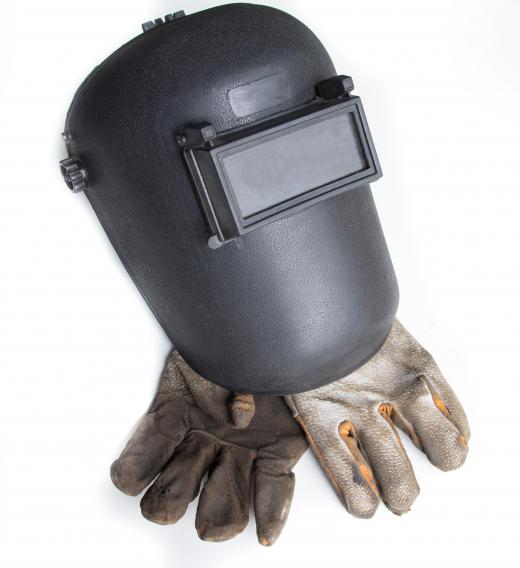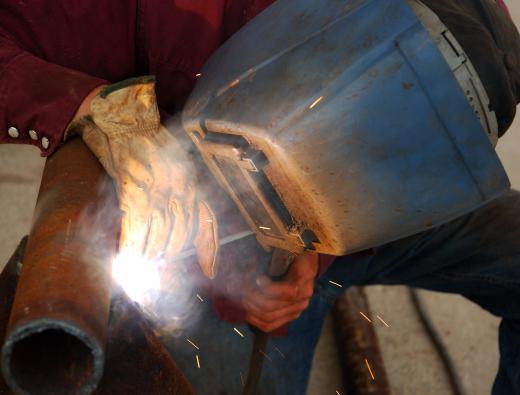Shielded metal arc welding, also referred to as stick welding, uses a two-part electrode to produce a structurally sound weld on multiple pieces of metal. The internal core of a stick electrode contains a metal alloy designed to weld a base metal of the same composition. A silicon-based flux surrounds the metal alloy and protects the molten weld from atmospheric contamination. Proper handling of the welding electrodes combined with the correct heat setting creates a strong weld with little spatter and no porosity.
Porosity consists of small holes penetrating a weld. Moisture causes the flux of a shielded metal arc welding electrode to break down and become soft. Soft flux falls away from the electrode rather than melting over the weld, allowing nitrogen in the atmosphere to react with the weld. Keeping stick electrodes dry prior to welding reduces the amount of moisture contained in the silicon-based flux. An incorrect heat setting is a secondary cause of porosity.

Cooled flux peeling away from a finished weld signifies the correct amount of heat for a shielded metal arc welding bead. Increased heat causes small beads of metal called spatter to form around the weld. The throwing of metal from the weld puddle disrupts the protective barrier surrounding the weld, causing large pockets of porosity. Reducing the temperature eliminates spatter and porosity but reduces the amount of penetration between the stick electrode and the base metal.

A weld with low penetration does not melt deep enough into the metal to provide a structurally strong weld joint. Striking the surface of the base meal and an electrode not lighting or sticking to the metal are the first signs that the welding temperature is too low. Another sign of a cold shielded metal arc welding temperature is curling at the sides of the weld bead. This causes the weld to look like it sits on top of the metal rather than being fused to the metal's surface. Cold welding temperatures are not the only factor that determines the penetration when stick welding.
The direction of rod travel changes the shape and penetration during shielded metal arc welding. An electrode pulled along the surface will allow the weld to penetrate deep and keep melted flux from entering the weld puddle. The correct heat setting and weld direction and inspecting each electrode prior to use will ensure that the finished shielded metal arc weld remains strong under pressure.
